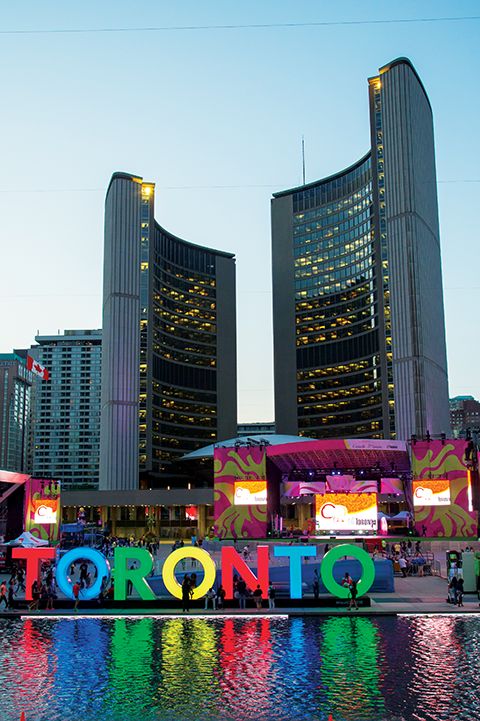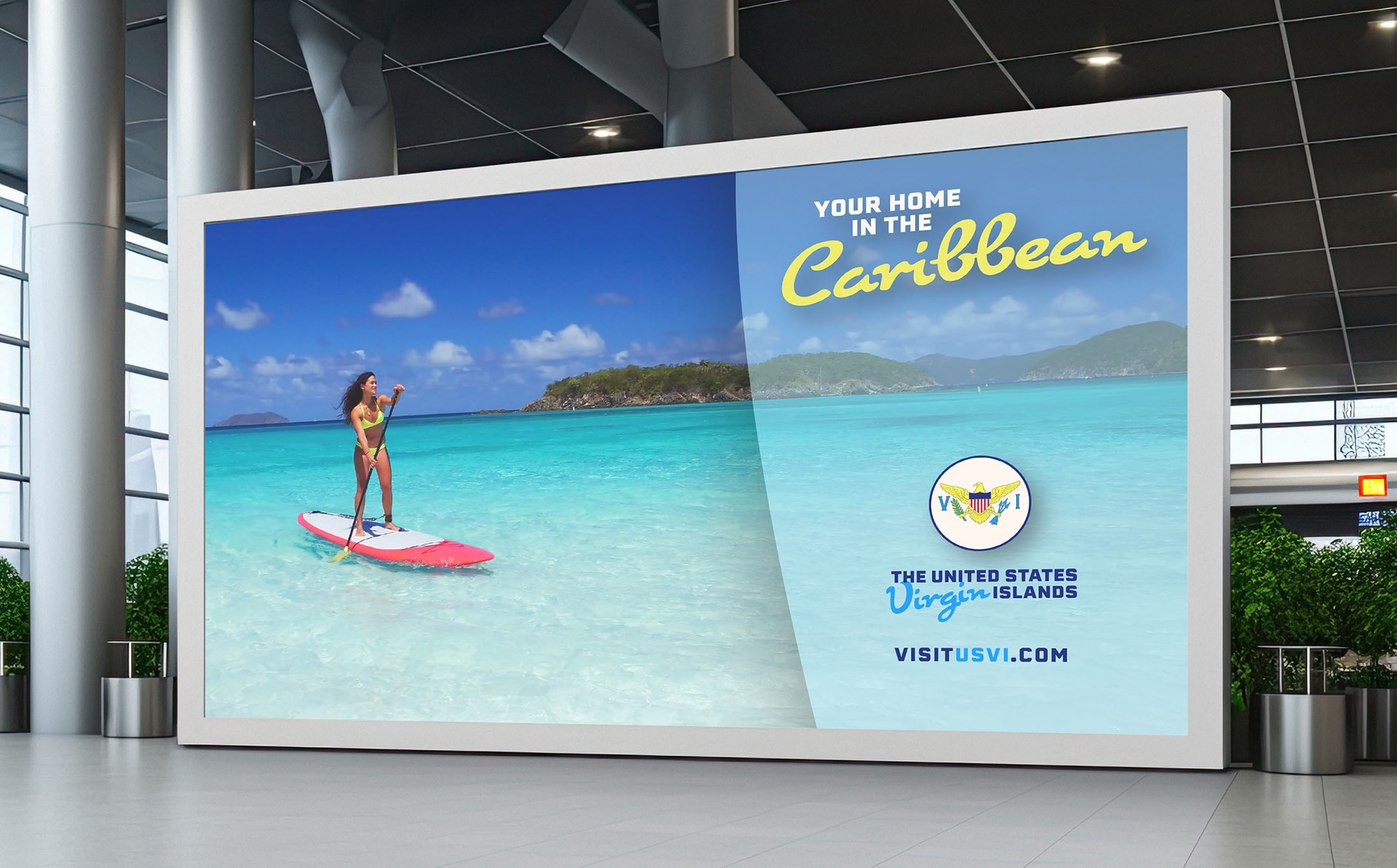Dressing up Toronto for the Pan Am Games
Street banners
Toronto’s ‘host city’ campaign also saw more than 4,000 vertical banners installed on electrical utility poles across the city, both to welcome athletes and other visitors and to generate stronger local awareness of the Pan Am Games.
The largest banner program to date in Toronto, it especially targeted areas surrounding local game venues and along major transportation routes in the Pan Am network, but also spanned all 77 of Toronto’s business improvement areas (BIAs) and 44 municipal wards.

Toronto sign
Finally, in early July, an illuminated dimensional sign spelling out ‘Toronto’ was set up along the northwest corner of a reflecting pool in Nathan Phillips Square, a public space in front of City Hall. Municipal employees were inspired by similar dimensional-letter branding installations around the world, particularly one for Guadalajara, Mexico, during the previous Pan Am Games in 2011, as well as the Olympic rings in Vancouver for the 2010 Winter Olympic Games.
The Toronto sign was positioned for photo opportunities, with City Hall’s two towers in the background and the sign’s own reflection in the pool. An ideal photographer’s position was even marked with street decals on the south side of the pool, in the hope of—much like the Pachi sculptures—inspiring the public to share their photos via social media with their friends and families on an international scale, using the hashtags #share3DTO and, again, #HostCity2015.
That said, while the sign was introduced as part of Panamania Live, an arts and culture festival coinciding with the games, it will remain in the square until the end of the year, then possibly tour other popular parts of the city, with an estimated lifespan of three to five years.
“The sign is a great way to showcase our city’s pride in a fun and interactive way, both during the games and beyond,” says John Tory, Toronto’s mayor.
Each of the seven individual dimensional letters in the 3 x 22-m (10 x 72-ft) sign—which use the Azo Sans Bold font—was constructed with a steel frame, aluminum cladding and translucent polycarbonate front and back panels, weighs about 136 kg (300 lb)—for a total sign weight of 1,180 kg (2,600 lb)—and rests on a 1,180-kg (2,600-lb) plinth (i.e. base). They contain approximately 396 m (1,300 ft) of light-emitting diodes (LEDs), which can be transitioned to create 228 million colours via wireless-fidelity (Wi-Fi) control. They also feature colourful vinyl side wraps that can be removed, enabling them to be ‘reskinned’ with different designs for other occasions in the future.
With files from the City of Toronto and Holman. For more information, visit www.toronto.ca and www.holmanexhibits.com.







